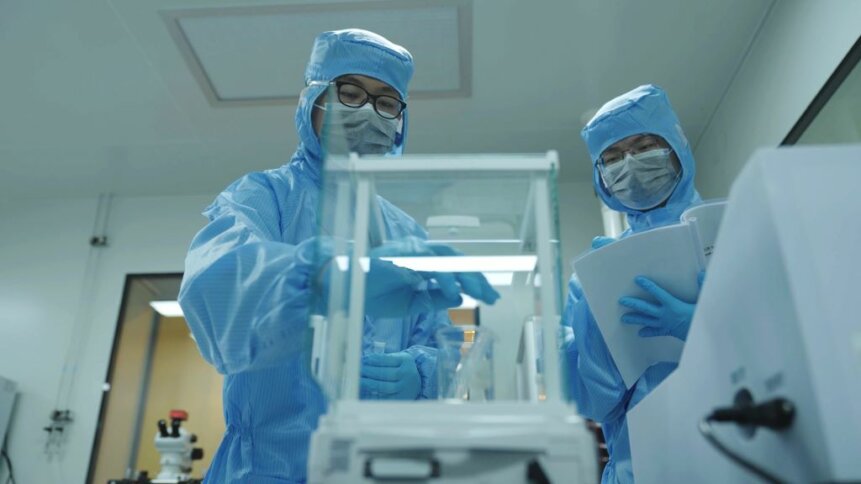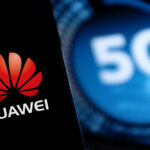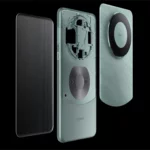Secret formula behind Huawei Mate 60 Pro sales

|
Getting your Trinity Audio player ready...
|
“The most controversial phone of the year,” might not be the praise that Huawei was looking for when it launched the high-end Mate Pro 60, which included a significant chip upgrade. But executives at the firm will warm to the response if it signals that the Chinese multinational technology company has found the secret formula necessary to bounce back to its former smartphone heights.
Recall that a few years back, before US sanctions began to bite, Huawei had enjoyed worldwide success with its Kirin series of chips – designs that were in the same league as mobile processors from Apple, Qualcomm, and other leading players. Huawei then had to navigate a series of hurdles starting with being stopped from running Google’s own apps. Finally, pressure applied to chip-making giant TSMC ultimately led to Huawei being unable to ship handsets containing its own silicon.
Huawei’s plan B was to buy chips from Qualcomm, but that path only provided access to older designs rather than the latest Snapdragon SoCs. As commentators have pointed out, the Chinese multinational technology company had to rethink both its software and hardware. And this gets to the heart of why the Huawei Mate 60 Pro is grabbing so much attention – the firm has once again produced an advanced smartphone with its own silicon, the Kirin 9000 chip.
Kirin 9000: the Huawei Mate 60 Pro chip in detail
Some sources quote the Kirin 9000, the Huawei Mate Pro 60’s flagship chip, as being based on 7 nm silicon, compared with 5 nm for Apple’s A15 bionic, and 4 nm for Qualcomm’s Snapdragon 8 gen 2. But there are more details on the Huawei Mate Pro 60 chip to consider.
HiSilicon, the Huawei subsidiary developing chips for the Mate 60 smartphone series, describes the Kirin 9000 as having a 5 nm process node on its official product page. However, the semiconductor firm lists the most powerful of the Kirin 9000’s CPU cores as being the Cortex A77 running at 3.13 GHz. And the Cortex A77 – a design licensed from ARM, which supports 5G and features the TrustZone security extension to protect high-value data for authentication, payments, as well as other device operations – targets the 7 nm process node.
Geekbench scores shared on YouTube for the Huawei Mate 60 Pro, in a head-to-head comparison with the iPhone 14 pro Max, appear to reflect the 7 nm versus 5 nm performance difference. More positively for Huawei Mate 60 device owners and those considering purchasing a handset featuring the Kirin 9000 chip, speed tests for the Mate 60 Pro (again, available on Youtube) endorse the smartphone’s 5G capabilities. The footage shows download and upload numbers, which are on par with a device known to be connected to a 5G network.
No doubt, Huawei has aspirations to move its chip designs to a full 5 nm node, and it’s believed that the Huawei Mate 60 Pro chip is HiSilicon’s first SoC to be manufactured in high volumes in mainland China. Semiconductor Manufacturing International Corporation (SMIC) is dubbed the largest contract chip maker in the country and is well-placed to support the Mate 60 series.
Features of the Huawei Mate 60 Pro
The suite of front-facing sensors on the Kirin 9000 powered smartphone includes an ultrawide 13 MP self-camera, as well as ToF hardware for depth sensing – a combination that enables 3D face unlock. On the back, the Huawei Mate 60 Pro has a 50 MP main camera. But the showstopper – according to multiple reviewers – is the 48 MP periscope zoom camera, which gets smartphone photographers 3.5x closer to their subjects, and also suits macro shots.
However, while the camera on the Huawei Mate 60 Pro is a boon for users and features the best chip that the smartphone maker has ever made, the inability to run Google apps remains an impediment for many users. The handset ships with Harmony OS 4.0, which is said to run 20% faster and extend battery life by 30 minutes, compared with Harmony OS 3.0.
The Huawei Mate 60 Pro chip brings always-on display and other features to the smartphone – for example, the screen can be set to illuminate when the user glances at it. Also, if the front-facing sensors detect somebody glancing over the user’s shoulder to read a notification, the Mate 60 Pro has a privacy option to hide the message automatically.
⭕️ Huawei Mate 60 Pro+ model telefonun kamerasının tele-foto seviyesi.
🔭 Dürbünü mikro ölçekte telefona sığdırmışlar. pic.twitter.com/fwTU7ocQnr
— Turhan Bozkurt (@TurhanBozkurTV) September 8, 2023
Huawei’s Mate 60 Pro smartphone features an impressive periscope lens for zooming in on far-away photography targets, as this Twitter video clip highlights.
So-called ‘air gestures’ allow users to navigate the smartphone without touching it, including taking screenshots by grabbing with your hand. And while ‘air gestures’ may not sound like much at first, they stop you from smearing the screen if you’re enjoying delicious – but messy to eat – finger food.
Other high-end smartphone features include satellite communication for emergency scenarios, for when terrestrial cell phone networks are unreachable. Also, to save on battery life, the screen refresh rate, normally set to 120 Hz, can drop all the way to 1 Hz. The 3 hole punch camera and sensor gaps in the screen can be hidden through a ‘dynamic island’ style switchable option.
How many Mate 60 Pro smartphones will Huawei sell?
Estimates vary on how many Mate 60 Pro smartphones Huawei will sell. Counterpoint Research analysts have put a figure of 7 million for the minimum sales of Huawei’s Mate 60 series, including the Pro and featuring the Kirin 9000 chip. However, IDC (another market watcher) estimates that the total could reach 15 million.
What’s clear, is that Huawei has found the formula for a popular smartphone, while managing to climb over or side-step the numerous hurdles that international politics has thrown in the Chinese firm’s device development path. And this poses a problem for Apple.
China is Apple’s largest iPhone market, in terms of volume, and Huawei’s Mate 60 Pro – based on early sales of the high-end device – could cut deeply into the US tech giant’s sales in the region. Just a couple weeks after Huawei launched the Mate 60 Pro, the South China Morning Post reported that the device was already showing as sold out on major online channels.
It was interesting to note that the launch of the Huawei Mate 60 series coincided with the visit of US Commerce Secretary Gina Raimondo to China. And the Chinese smartphone developer got devices in customers’ hands before Apple had the chance to unveil its iPhone 15 lineup in September.
What’s next for Huawei’s AppGallery?
Considering both events, Huawei appears buoyed by once again having its own chips inside handsets. What’s more, growing customer numbers will attract developers and so being excluded from having Google apps on devices could become less of barrier to global sales if rival software gains ground.
Building a popular app store from the ground up is no easy endeavor, but then again, neither is building smartphone chips domestically in 2023. Huawei still has some distance to make up from its device heyday before US sanctions started to hurt the firm’s mobile sales. The Huawei Mate 60 Pro with its Kirin 9000 chip represents a Chinese smartphone developer with the commitment and resources to fight back, and lessons learned along the way could frustrate its competitors.









